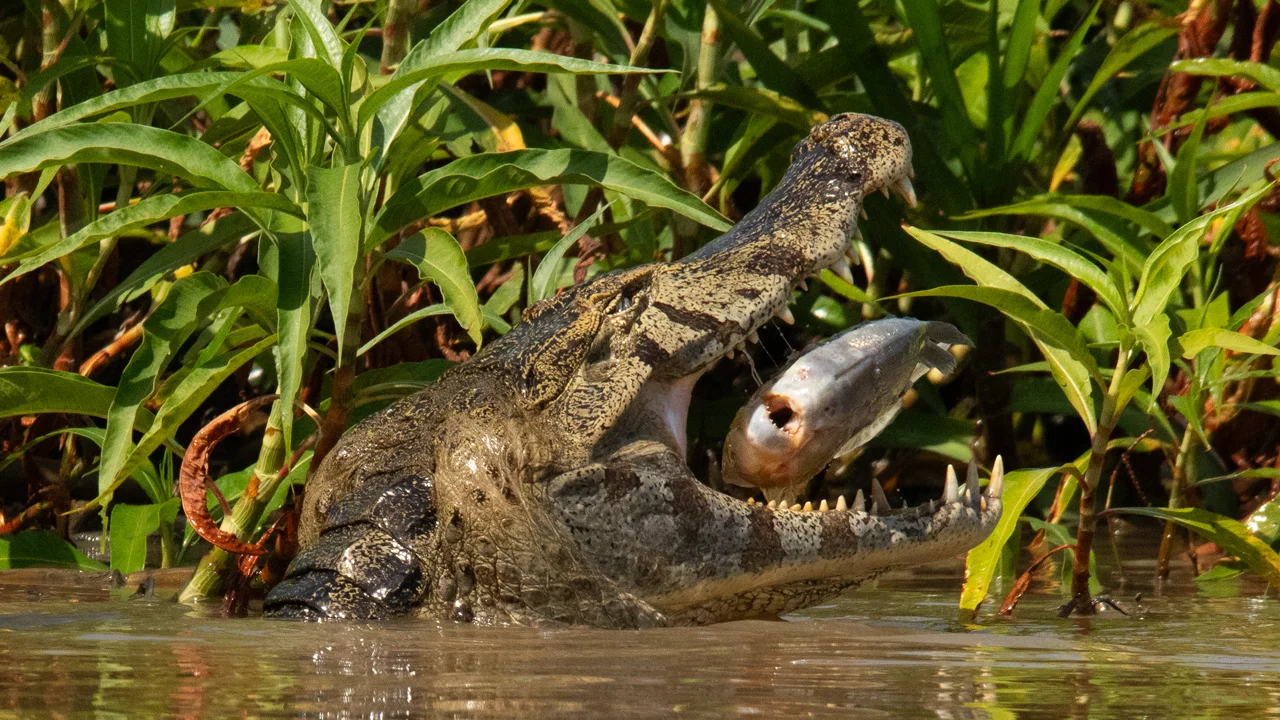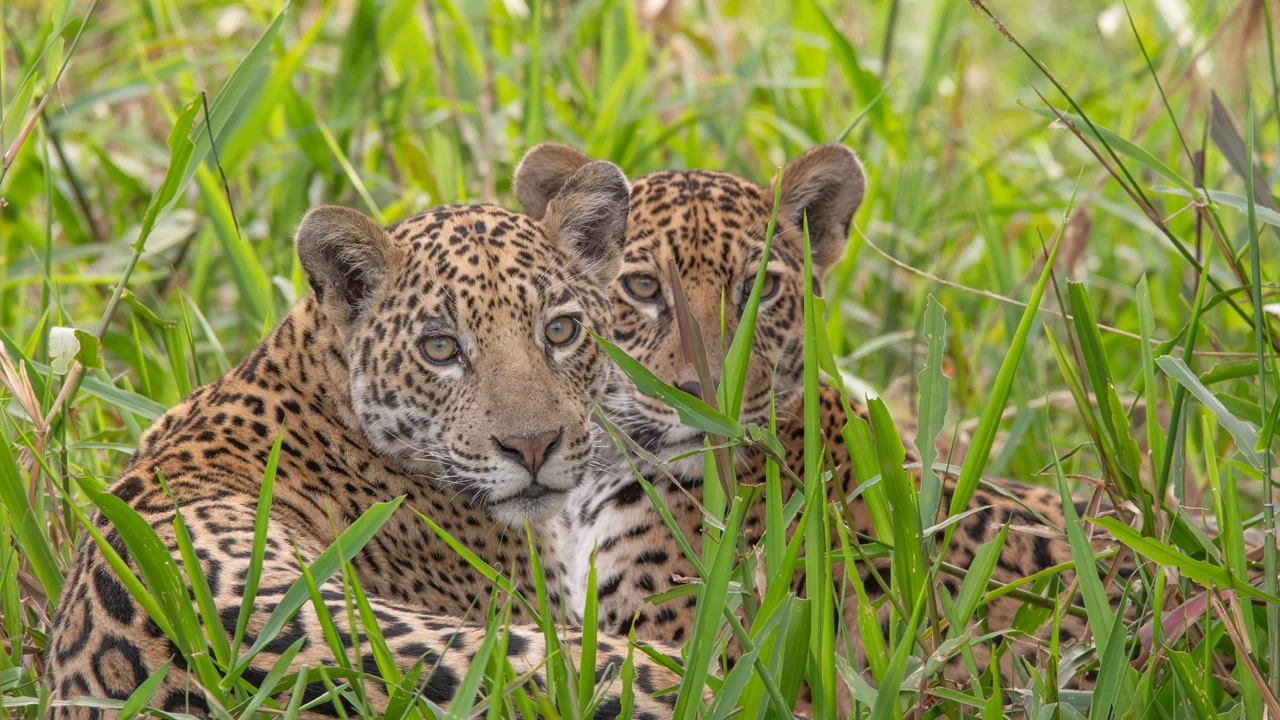Capturing a jaguar in its natural habitat is one of the greatest prizes in wildlife photography. In Brazil’s Pantanal wetlands, this once-in-a-lifetime shot is more attainable than almost anywhere else on Earth. But it still requires patience, preparation, and knowledge. At Yara EcoSafari, our certified biologists are both field researchers and photography guides. Their expertise helps photographers—whether amateurs or seasoned professionals—maximize their chances of returning home with extraordinary images that also respect the animals and the ecosystem. Photographing jaguars ethically is our highest priority.
Here are their best insights for photographing jaguars on the river.
1. Know your subject
Every jaguar is an individual, identifiable by its unique rosette pattern. Biologists use these markings to build long-term records, and each named cat—like Patrícia, Ousado, or Medrosa—comes with a story. By learning about their behavior, you’ll anticipate movements: Jaguars often patrol riverbanks, searching for caimans or capybaras.
They rest in the shade during the heat of the day.
Mothers with cubs linger longer near sheltered coves.
For background, see the Jaguar ID Project and Panthera’s Jaguar Program, both dedicated to monitoring and protecting jaguar populations.
Related post: Why Do Jaguars Have Names?
2. Be ready during prime hours
Jaguars are most active in the early morning and late afternoon, when the Pantanal’s light is soft and golden. These “magic hours” are also cooler, encouraging predators to move. Tip from our guides: Never pack up too early. Some of the most dramatic encounters—a jaguar swimming across the river, or stalking prey on the bank—happen just before sunset, but you can see them all day long.
3. Gear up smart (without overpacking)
You don’t need the priciest gear, but you do need the right setup: A zoom lens (100–400mm or 150–600mm) is ideal.
A wide-angle lens helps include habitat for storytelling shots.
A monopod or bean bag stabilizes your camera on the boat’s edge.
Always bring extra batteries and memory cards—jaguars can keep you shooting all day.
See our full packing guide: What to Pack for a Water Safari in the Pantanal
4. Use the boat to your advantage
Most safaris happen in jeeps. Ours happen by boat—and that makes all the difference. On the river, you’re often eye-level with jaguars, which produces intimate, cinematic perspectives.
Silent approaches mean less disturbance and more natural behavior.
Boats allow smooth repositioning to adjust for light and background.
Guides trained in ethical navigation ensure you never crowd the cat—a principle supported by groups like WWF-Brazil and ICMBio, which oversee wildlife tourism in protected areas.
Related post: From Tracking to Click: How We Find Jaguars on the River
5. Think beyond the cat
Yes, the jaguar is the star. But the Pantanal is a living stage filled with other charismatic species: Giant otters, listed as Endangered by the IUCN Red List.
Hyacinth macaws, conserved through the Instituto Arara Azul.
Capybaras, caimans, jabiru storks, and hundreds of bird species.
Framing these animals — or even including them in context with jaguars — tells a richer conservation story. This is key to successful wildlife photography.
Related post: Why the Pantanal Is the Best Wildlife Photography Destination You’ve Never Heard Of
6. Respect the animal, respect the moment
The best photograph is an honest one. Chasing or crowding stresses jaguars and risks altering their behavior. Our biologists teach guests to read stress signals and step back when necessary. This approach is part of what makes Yara EcoSafari different: every photo opportunity is guided by the principle that conservation comes first.
For further reading, see: Sustainable Safaris: Can You Photograph Wildlife Without Harming It?
UNESCO Pantanal Biosphere Reserve (context on global significance).
Final tip: patience pays off
Wildlife photography is as much about waiting as it is about snapping the shutter. The river may seem quiet, but at any moment a jaguar can emerge from the reeds, bathed in light that makes the perfect frame. Breathe. Watch. Then click.






